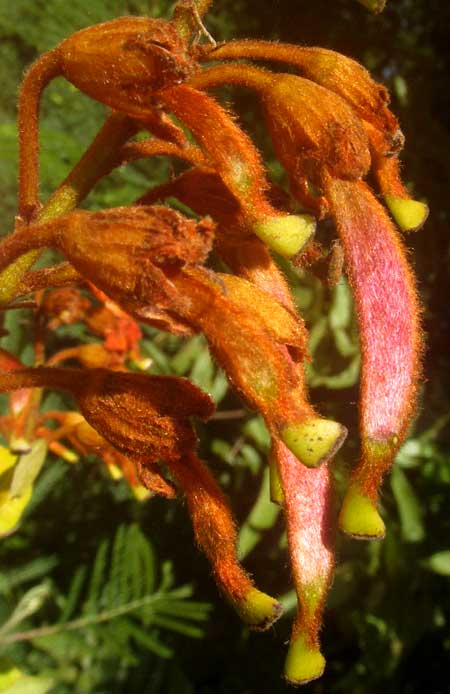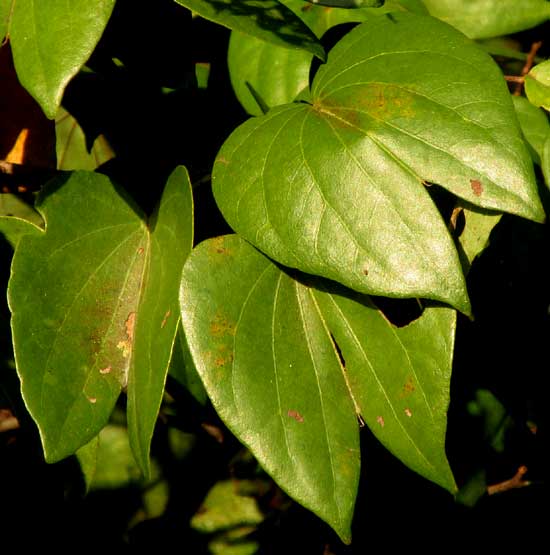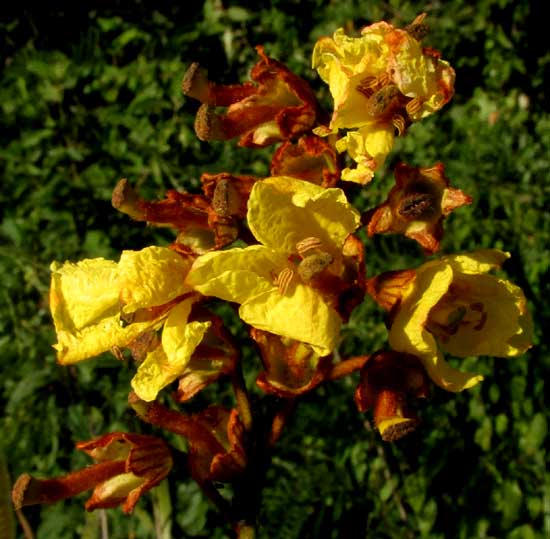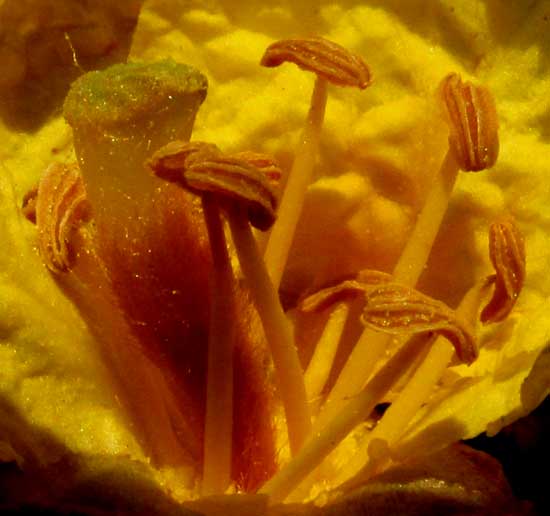Excerpts from Jim Conrad's
Naturalist Newsletter
from the January 21, 2018 Newsletter issued from Rancho Regenesis in the woods ±4kms west of Ek Balam Ruins; elevation ~40m (~130 ft), N20.876°, W88.170°; north-central Yucatán, MÉXICO
YELLOW-FLOWERED COWFOOT
Along the highway to Temozón, during my usual Sunday morning bike trip to buy fruit, dishpan-size splotches of something reddish-brown began showing up, conspicuous against the dark greenness of tree tops. I hadn't noticed that before, so I stopped for a look, and saw that the reddish-brown was provided by clusters of shiny, dangling fruits at the tips of vigorous woody vines, or lianas. The fruits looked like flattish, finger-length legumes of the Bean Family, as shown below:

Closer up, the fuzzy fruits still looked like something out of the Bean Family, though they bore weird, green, flat-topped stigmas much larger than you'd expect, as seen below:

Notice that the rusty-colored hairiness covers the goblet-shaped calyxes, too. I'd never seen this combination of features, though the liana's leaves looked just like those produced by species in the Bean Family genus Bauhinia, often called Cowfoots because of their shapes, as you can see below:

But, the cowfoot species I know all are shrubs and trees, with white to pink or red flowers. And this liana's few remaining flowers after an earlier flowering peak were bright yellow, as you can see below:

A broken-open blossom showed an ovary coated with dense rusty-colored hairs and that big stigma looking even more outlandish atop such a small ovary, surrounded by five stamens, as shown below:

It took a while to identify this species, even though I felt sure of its Bean Family membership. But the Bean Family is enormous, with lots of genera I've never heard of. In the end, after slogging through all the genera known to exist in the Yucatan Peninsula, I was left only with genera I could recognize, but which I was almost sure this plant wasn't a member of. And then I remembered the cowfoot-shaped leaves, went to the genus Bauhinia and there it was -- a genuine yellow-flowered liana I'd overlooked until now.
Happily there's a fine treatment of the cowfoot genus Bauhinia in the Yucatan Peninsula. It's a 2009 work by Rafael Torres-Colín and others in the Revista Mexicana de Biodiversidad vol. 80, #2. It can be freely downloaded in PDF format, found by searching on the title, "El génro Bauhinia (Fabaceae, Caesalpinioideae, Cercideae) en la península de Yucatán (México, Belice y Guatemala)"
This anomalous cowfoot species is fairly common in southern Mexico south to Nicaragua, and then again in Peru
The liana's slender, woody stems are strong enough for the Maya to use them to tie together beams in their hut roofs, plus traditionally it's been used medicinally to treat dysentery and hemorrhages. It's been reported used as a fish poison.